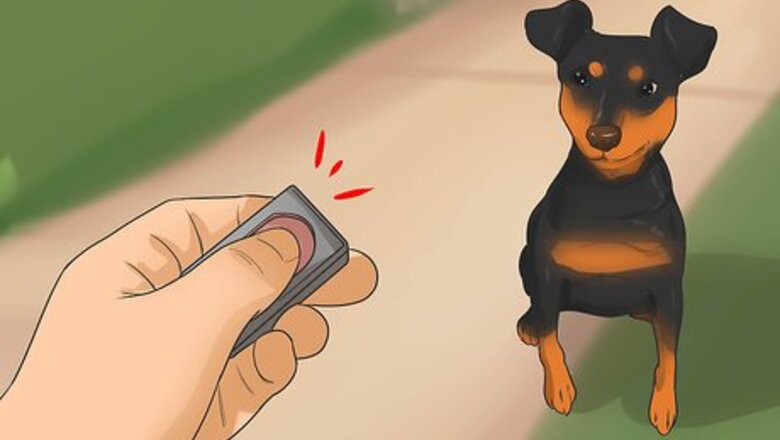
views
X
Trustworthy Source
American Kennel Club
The American Kennel Club (AKC) is a purebred dog pedigree registry in the United States. The AKC advocates for the responsible ownership of dogs and promotes purebred dog events, such as the Westminster Dog Show.
Go to source
If you have recently chosen a mini pin as a new companion or if you have had a mini pin for a while, then you might be wondering about how you can train your mini pin. You can use dog training techniques to ensure that your mini pin is house trained and that he knows basic commands.
Using Helpful Training Techniques
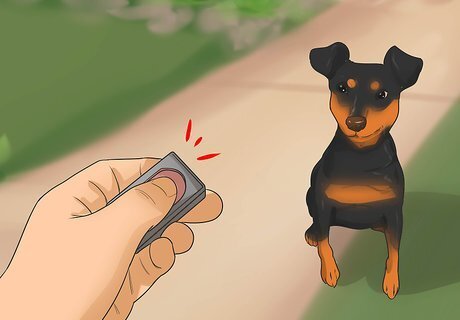
Get a clicker. It is important to mark your dog’s good behavior right when she does it. Using a clicker can help you to do this. A clicker is a small noisemaker that you can buy in a pet supply store. Use a clicker to mark your dog’s good behavior and help her to learn what you want her to do. For example, if your dog responds to your “Sit” command by sitting, then click the clicker right as her bottom hits the floor. This will help her to associate sitting with doing something good.
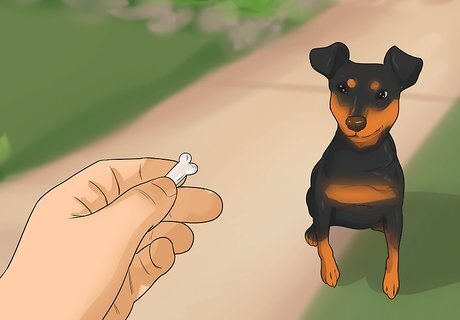
Keep treats on hand. Treats are excellent for motivating your mini pin to obey your commands. Keep a bag of your mini pin’s favorite treats on hand and reward her with one for following your commands. Never hold treats in your hand while you are training. This will distract your dog and she will not be able to give you her full attention. Try to vary how often you give your mini pin a treat. Giving a treat after every command can leave your mini pin expecting to be rewarded. Give frequent treats at first and then start to space them out more, such as every other command or every third or fourth command.
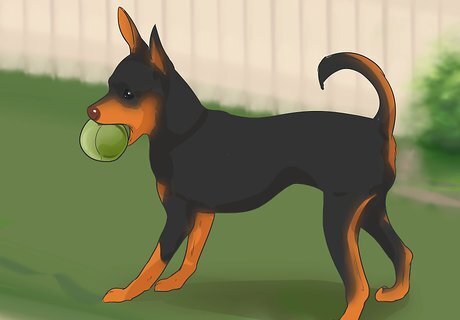
Use toys and play time as a reward. You can also use other things to reward your mini pin for her hard work and obedience during training sessions. For example, you can give your mini pin a new toy, reward her with a belly rub, or take her for a walk.
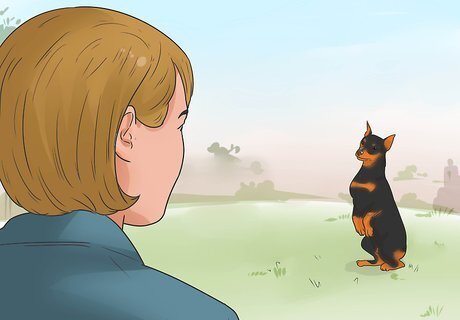
Train in different locations and positions. If you always train your mini pin while you are sitting down, then she may associate the command with your body position. Likewise, if you only train your mini pin in the living room, then she may associate the command with the room. Make sure that you vary your training positions and locations to ensure that your mini pin will respond to your commands in any situation. EXPERT TIP Colleen Demling-Riley, CPDT-KA, CBCC-KA, CDBC Colleen Demling-Riley, CPDT-KA, CBCC-KA, CDBC Canine Behavior Consultant Colleen Demling-Riley (CPDT-KA, CBCC-KA, CDBC) is a Canine Behavior Consultant and the Founder of Pawtopia Dog Training. With more than 20 years of experience, she specializes in creating and customizing dog management programs for dog owners. She is a Certified Pet Dog Trainer-Knowledge Assessed, Certified Behavior Consultant Canine-Knowledge Assessed, Certified Dog Behavior Consultant, and American Kennel Club Canine Good Citizen Evaluator. Colleen is a member of the International Association of Canine Professionals and has been a featured expert in national media including the New York Times, Woman’s Day, Readers Digest, Cosmopolitan, and Yahoo.com. Colleen Demling-Riley, CPDT-KA, CBCC-KA, CDBC Colleen Demling-Riley, CPDT-KA, CBCC-KA, CDBC Canine Behavior Consultant Miniature Pinschers need training and socialization. Miniature Pinschers are both affectionate and highly energetic. They're small dogs with a big personality–they bark quite a bit! If you are prepared to put in the time to train and look after them, a Miniature Pinscher can make a great addition to your household.
Housetraining Your Mini Pin
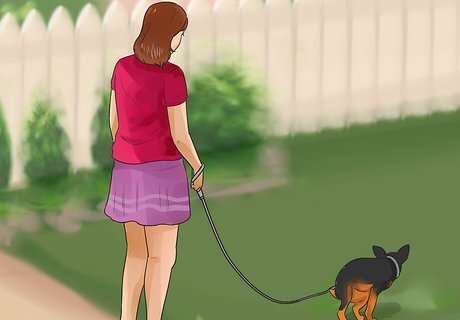
Take your mini pin outside often. Potty training your mini pin takes time and effort on your part and hers. One important part of potty training is taking your mini pin outside to go potty often. You may need to take your mini pin out once every two hours until she is house trained. Make sure that you take her to the same spot every time. Choose a patch of grass in the yard where you want your mini pin to go potty and lead her to the same spot every time. Give her lots of praise when she goes potty outside. Rub her belly, say “Good dog!” and give her a treat when you get back in the house.
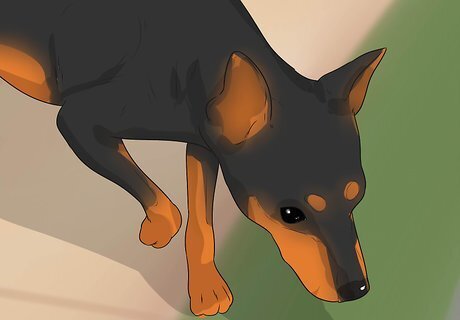
Watch for bathroom behaviors. Your mini pin will probably start showing some typical bathroom behaviors when she has to go potty, so be on the watch for these. Take her outside to go potty as soon as you notice bathroom behaviors. Some typical bathroom behaviors include: sniffing walking in circles walking with back legs straight and stiff
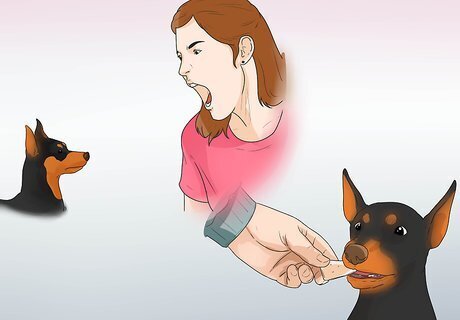
Use positive reinforcement, not negative reinforcement. Always remember to reward your mini pin for going potty outside. Do not use negative reinforcement because it does not help your dog to learn new behaviors. It only frightens your dog. Never yell at your dog, hit your dog, or rub your dog’s nose in urine or feces. If your mini pin goes potty in the house, simply take your dog outside and clean up the mess right away to prevent her from using the same spot again. You can also clap your hands loudly if you notice her going in the house. This should startle her enough to get her to stop and then you can lead her outside to finish.

Enlist the help of a neighbor or friend during long periods away. If you will be at work or somewhere else for a long stretch of time, then it is important to find someone who can take your mini pin outside to go potty. Try asking a friend or neighbor to stop by once or twice to let out your mini pin or walk her around the block. If you cannot find someone to let your mini pin during the day, then consider hiring a dog walker or taking your mini pin to doggy daycare while you are away. Your dog cannot hold her urine or feces all day and it is cruel to expect your dog to do so. If you leave for a long stretch of time and your dog cannot go out, then she will likely have an accident.
Teaching Basic Commands
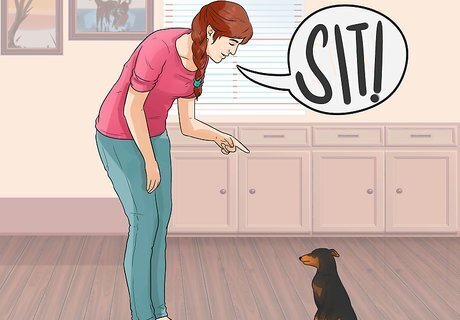
Start with “Sit.” Sit is the most basic command that you can teach your dog and it is easy to teach, so it is a great place to start. To teach your dog to sit, stand in front of her and say “Sit” while raising your hand in the air or holding a treat in the air to keep her attention. You may have to do this a few times before she gets the idea. If it does not work the first time, keep trying. If your mini pin does not respond to the command and hand gesture alone, then you can also try gently pushing her bottom down towards the floor while saying “Sit.”
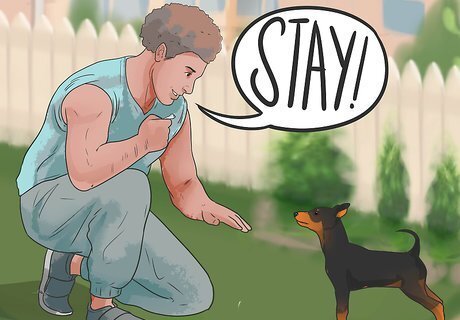
Teach your mini pin to “Stay.” Teaching the “Stay” command is also important in early training. To teach your mini pin to stay, wait until he is sitting down and then label the behavior as “Stay.” Reward your mini pin with praise and a treat for staying seated. After doing this few times, try giving the command while slowly backing away from your mini pin. Reward her if she stays put. Over time, your mini pin will learn that “Stay” means don’t move. You can also train this command while your mini pin is on a leash and just back away as far as the leash will allow.
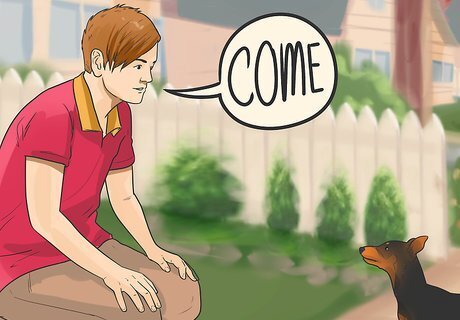
Use the “Come” command to get your mini pinscher to walk towards you. Training your mini pin to come towards you is another important basic command. To train this command, say “Come” and pat your legs with your hands. This should entice your mini pin to walk towards you. If she does, then reward the behavior. After a few times of saying “Come” while patting your legs, you can progress to just giving the command. Say “Come” and see if your mini pin approaches you. If she does, reward her with a treat and lots of praise. If your dog does not respond to you standing up and patting your legs, you can also try squatting down with your arms out to her. This might be a more comforting position for a puppy.
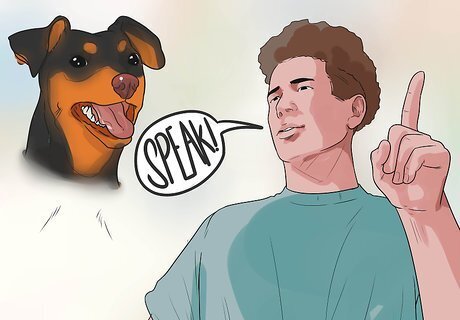
Get your mini pin to “Speak.” Teaching you mini pin to speak is a fun basic command. You can teach this command by first doing something to get your mini pin to speak, such as knocking at the door. Then, while your mini pin is barking, label the behavior as “Speak” and reward her. Repeat this exercise a few times and then try to get your mini pin to speak without knocking at the door. Just say “Speak” and see if your mini pin barks. If she does, then reward her with some praise and treat.
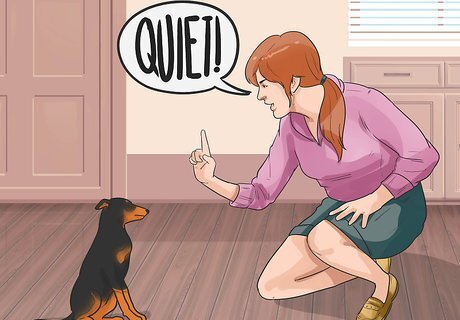
Add the “Quiet” command. You can also train the “Quiet” command along with the “Speak” command. To train your mini pinscher to be quiet, wait until he stops barking on his own and then label the behavior by saying “Quiet.” Make sure to reward your mini pin for being quiet as well. After labeling the behavior a few times, try to command your mini pin to be quiet while he is barking. Reward your mini pin if she goes quiet in response to your command.

















Comments
0 comment